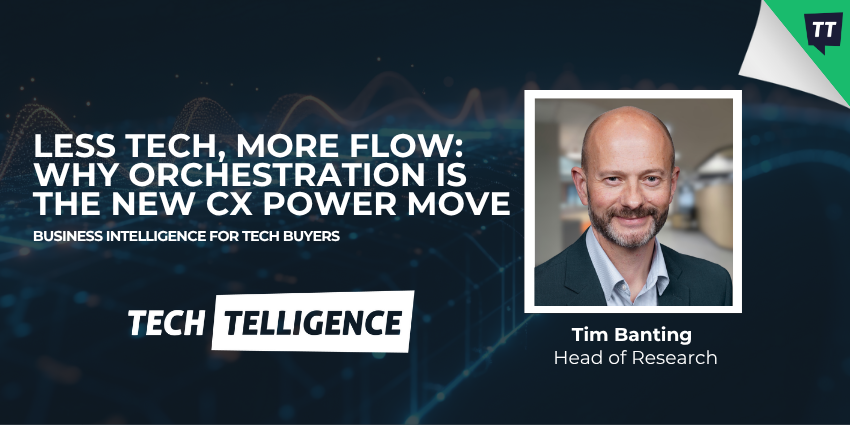As AI continues to revolutionize how organizations deliver services, the public sector faces a unique set of challenges.
For government agencies, implementing AI isn’t just about improving efficiency; it’s about doing so in a way that preserves public trust, protects sensitive data, and maintains full transparency.
With high-profile initiatives like HMRC’s £2 billion digital transformation under public scrutiny, it’s clear that responsible innovation is non-negotiable.
To better understand how government departments can adopt AI securely and ethically, CX Today spoke with Kyle Birker, Solutions Architect at ComputerTalk.
Start with a Privacy Framework
“There’s no one-size-fits-all answer,” says Birker, when asked how government departments can ensure secure and compliant AI systems.
Instead, he advises agencies to begin with a privacy or compliance framework that governs how data is collected, accessed, and used.
“It goes beyond just customer data. There’s also internal data, and the systems accessing that data must be compliant too.”
This includes not just the AI platform, but the entire surrounding architecture. From data ingestion tools to backend services and APIs, every component must meet internal standards and external regulatory requirements.
Only with that foundation in place can organizations begin building a trustworthy AI ecosystem.
Transparency Builds Public Trust
While customers in the private sector often have the option to opt out of AI-enabled services, citizens don’t always have that luxury. That’s why transparency is critical.
“There’s still a lot of skepticism around AI in the public sector,” Birker notes.
“People worry about what AI can do, what data it’s using, and how it affects their lives.”
To shift public perception, agencies must clearly communicate how AI is being used and, crucially, why.
“Explaining the purpose behind the AI can flip the narrative,” says Birker.
“If people understand it’s improving their experience – not just cutting corners – they become much more receptive.”
In practice, this means highlighting tangible benefits like quicker response times, fewer call transfers, and smarter service routing – rather than masking automation behind vague explanations.
“When people see that AI is improving their experience and doing so securely, they’re far more likely to embrace it.”
Start Internally to Build Confidence
According to Birker, one of the most effective ways to foster trust in AI is to use it internally before deploying it to the public.
“Every employee is a citizen too,” he says. “If they use these tools daily and see the value firsthand, they’re more likely to support them outside of work.”
This internal-first strategy reduces risk while building a workplace culture that sees AI as a useful ally – not a black box.
“Once you’ve seen AI streamline your own work, it’s easier to believe it can do the same for public services.”
It also addresses a common concern: job displacement.
“Most people don’t want to be answering basic water billing questions at midnight,” Birker says.
“AI can handle those repetitive tasks, freeing up staff to focus on more meaningful work.”
A Real-World Rollout
ComputerTalk recently supported a government agency struggling with an overwhelming, unstructured dataset and limited human resources.
Instead of rushing a full-scale AI deployment, the team opted for a phased rollout.
“We started small, with a certified data set and clear guardrails on how the AI would be used,” says Birker.
“We showed users exactly where the AI was sourcing its information – and what its limits were.”
That transparency helped build early confidence. As trust grew, the solution expanded incrementally, focusing on the data points that mattered most.
“They went from feeling overwhelmed to having clear, data-driven priorities,” Birker explains.
“It was never about launching AI for its own sake – it was about proving value and building trust at every step.”
Innovation with Responsibility
Security isn’t an afterthought at ComputerTalk; it’s built in from the ground up.
The platform provides out-of-the-box compliance and supports “bring-your-own-framework” models — a popular choice among government bodies seeking to maintain control over sensitive data.
For Birker, “collaboration is key.”
“It’s not about handing over a product and walking away. We work together to define standards, set guardrails, and ensure compliance on both sides.”
That includes audit trails, continuous feedback loops with staff and citizens, and regular system reviews aligned with the original privacy framework.
Final Thoughts
AI represents a powerful opportunity for governments – but also a potential risk.
When implemented responsibly, it can improve citizen experiences, reduce workloads, and enhance service delivery. When handled poorly, it risks eroding public trust and exposing sensitive data.
By establishing robust frameworks, embracing transparency, and taking a collaborative, phased approach, agencies can strike the right balance between innovation and accountability.
As Birker puts it:
“Once people see how AI can help – not just what it is – they’re more open to embracing it.”
For more information on ComputerTalk and its range of services and products, visit the ComputerTalk website.
You can also learn more about the vendor by watching this interview with Jennifer Sutcliffe, Vice President of Operations and Control, and reading about ComputerTalk’s approach to security in the age of omnichannel and AI contact centers.







